In 2015 when Derek was 87, we featured him and his garden in Gardens Illustrated. After the news of his death last week, we are sharing the feature again, to celebrate a remarkable, resourceful man who had a beautiful farmhouse garden.
Fergus Garrett of Great Dixter said: ‘Deryck was greatly loved and a source of inspiration for the team at Great Dixter.’
I followed my instructions to reach Deryck Body’s garden on the edge of Romney Marsh: drive slowly down the lane and look out for multi-coloured dahlias singing loudly over a well-trimmed hedge. And there was Deryck, a retired farmer, standing tall despite his advanced years, surrounded by shoulder-high flowers: “the best ever this year, from the tulips onwards”.

It’s this enthusiasm that keeps most gardeners carrying on gardening but few to such great effect as Deryck. And it isn’t just flowers that keep him busy, he grows his own vegetables and herbs, looks after a large orchard and nuttery with a soft fruit cage, runs a few sheep – four calm ewes – to keep the grass down, a few hens for eggs, and on the other side of the orchard, there’s a large asparagus bed.
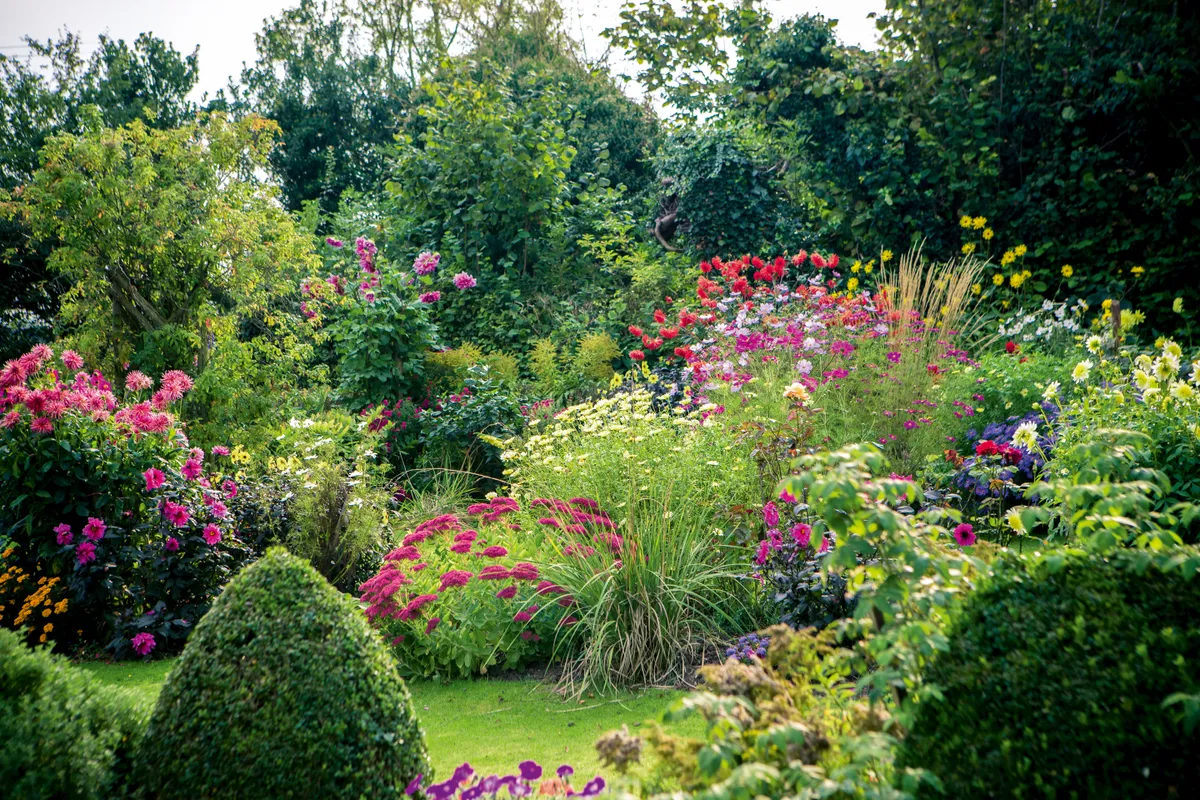
In the farming world, the garden was traditionally woman’s work. His mother was a plantswoman, and Deryck’s wife Betty was in sole charge of the flowers and veg beds. Sadly, and suddenly, Betty died in 2001, and so Deryck took over her garden, finding solace among her plants. He has taught himself the names of the flowers, and although he has always loved making things grow, he prefers the more practical things of life. But the flowerbeds are seen from the road, so he felt obliged to keep them looking lively.
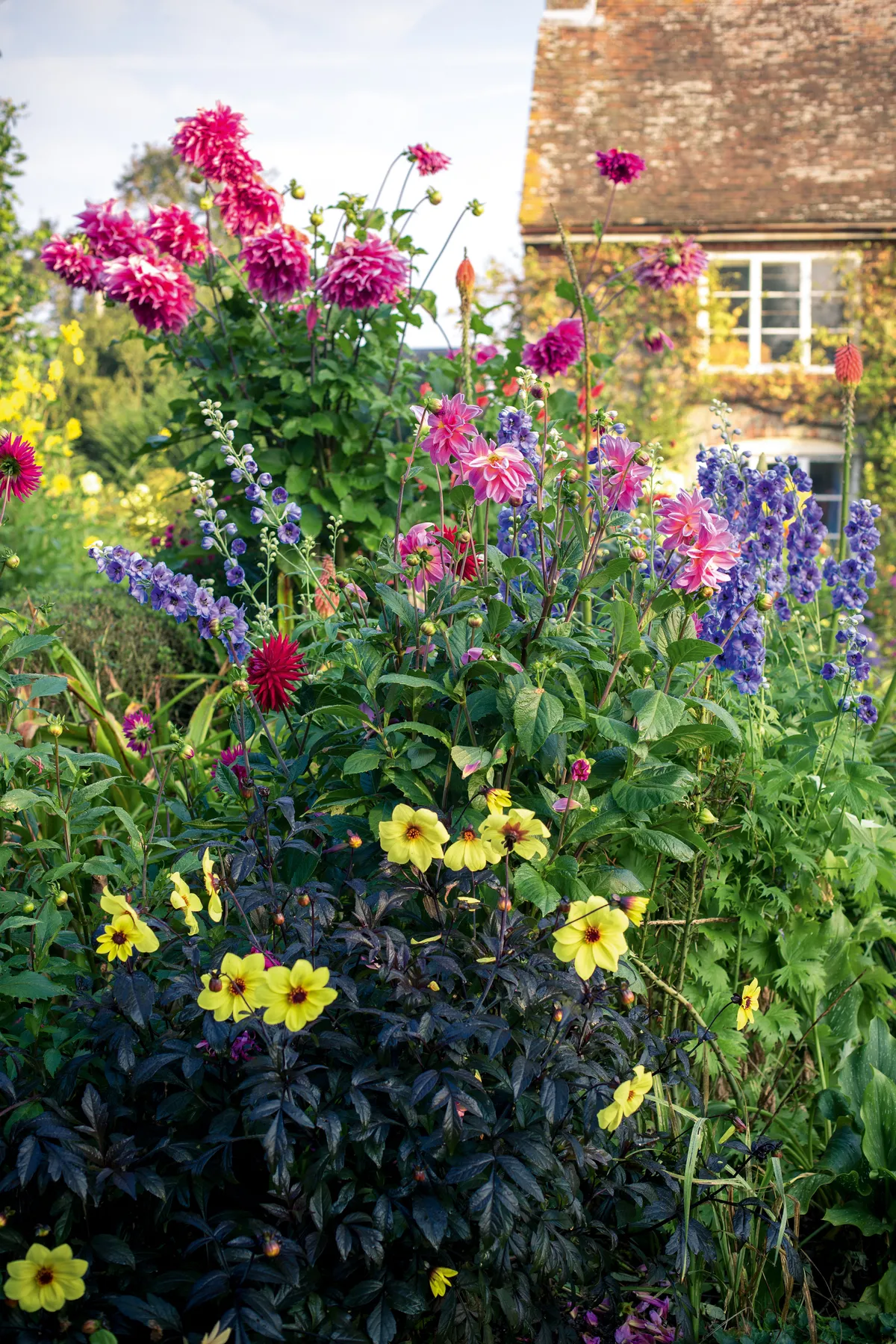
Deryck was brought up in this farmhouse. He left to build his own house down the road and moved in with his new wife, but came back 25 years later when his older son got married, so he has known this spot all his life. Set back from the road, the front garden is pretty much the same width as the house, with beds to either side of the front path, and a tradesmen’s entrance round to the back door, screened by a low clipped hedge. The rest is a kitchen garden fenced with chestnut paling to keep out the woolly mowers; a large collection of fruit and nut trees; and tucked behind, an exquisite little thatched cottage built by Deryck for his grandchildren, using only tools that would have been in use in the 18th century, with it’s own tiny cottage garden.
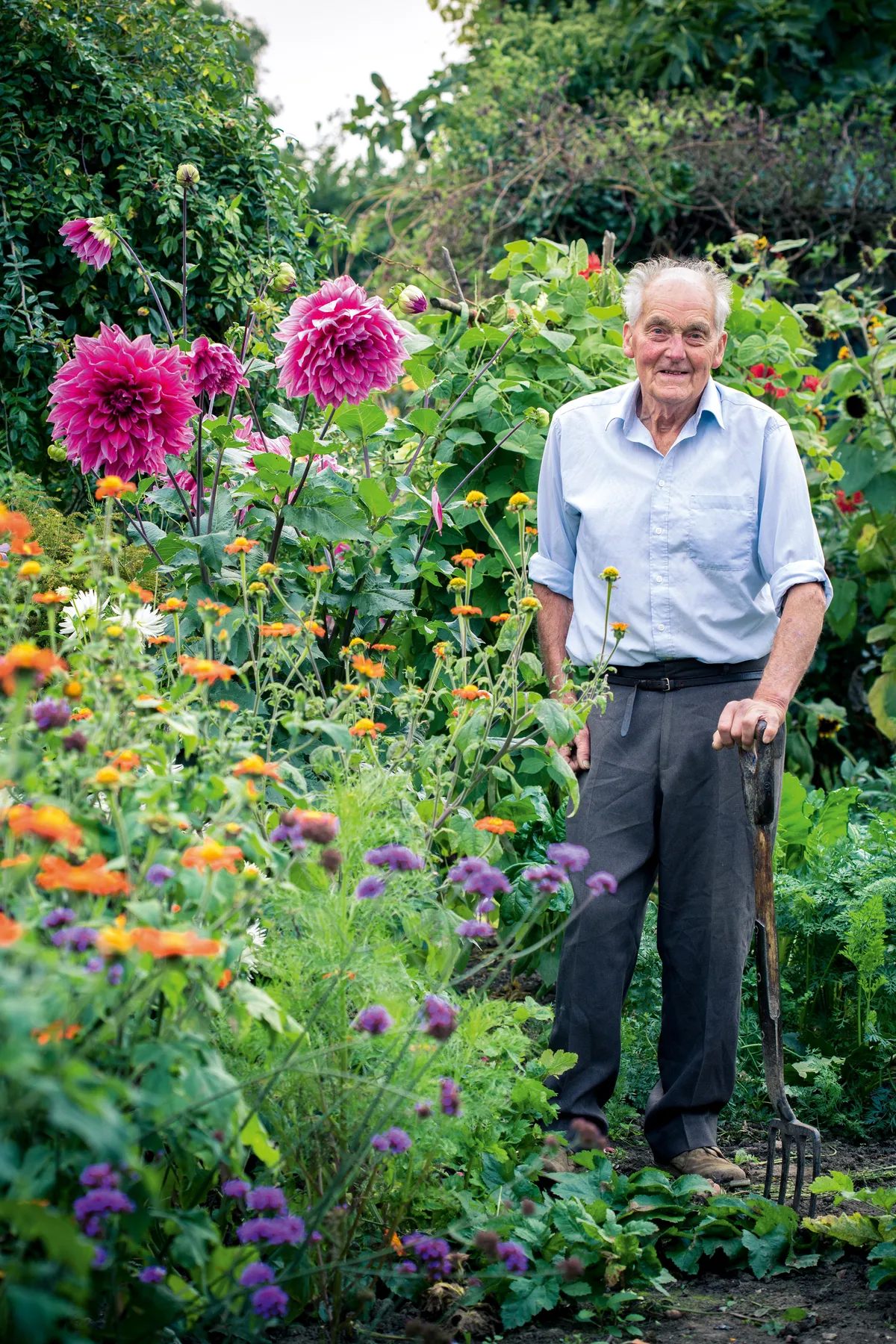
The soil is ancient and alluvial. Romney Marsh has been cultivated since the 13th century for the Archbishops of Canterbury, and this area was drained in 1804 to create the Royal Military Canal. The acre plot would have sustained a farmer’s family. After Deryck passed his farm on to his sons, he started thatching local barns and cottages, using his own strain of long straw wheat. He made his own ladders – some 40 rungs tall – cut cleft chestnut fences, hurdles and gates, and became famous in the neighbourhood for his workmanship. In his late seventies, he visited Great Dixter (once farmed by one of his relations) to cap the woodshed’s roof, and met Christopher Lloyd. They famously disagreed about cutting back the fig tree that was in the way, and Lloyd stamped off grumbling: “I’m not going to be told what to do by that young whippersnapper.” A happy compromise was reached.
In brief
What Productive farmhouse garden. Where Kent. Size One acre. Soil Fine grained, alluvial and fertile. Climate Mild with risk of flooding. Hardiness rating USDA 8.
He has continued his relationship with Great Dixter. Head gardener Fergus Garrett says that everything about Deryck comes from a bygone age: a lovely world we’d all like to live in. “He massively influenced our decision to turn the Great Barn into a classroom for country skills,” says Fergus. “And he helped us set up samples and examples of how woods and greenwoods can be turned into necessary everyday objects of great beauty. I have immense respect for everything Deryck makes: from the way his gates work to his rook pie; and for his understanding of the land he works, of his animals, of wood, everything he turns his hand to. It’s a privilege to visit the farmhouse, and be briefly part of his world, to be informed by his knowledge and touched by his friendship.”
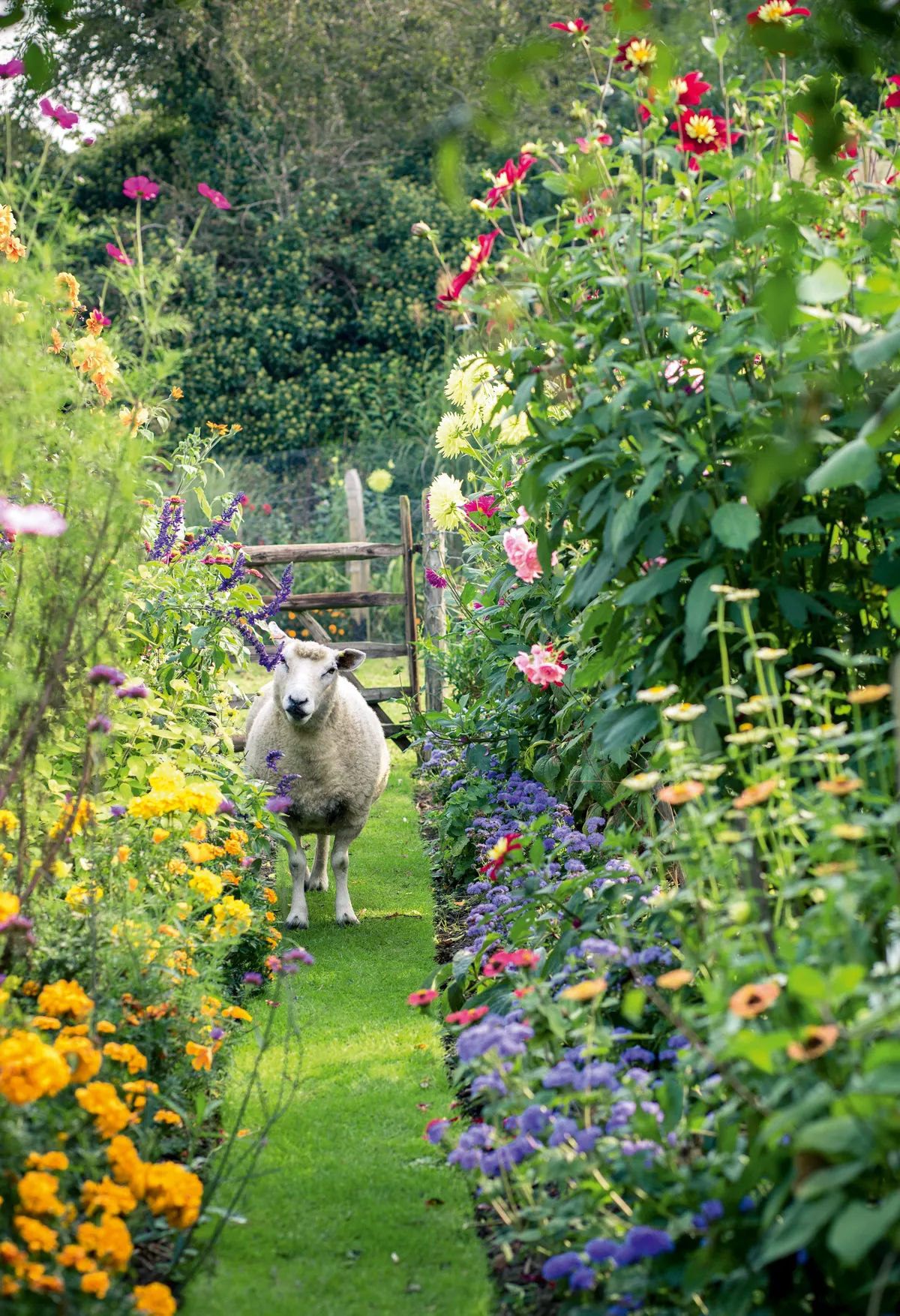
The list of what Deryck is both willing and able to turn his hand to goes on and on and even stretches to milling his own flour from the farm’s strain of long straw wheat, which we were lucky enough to sample on our visit. Our tea of home-baked rolls with greengage jam – homemade, of course – a boiled fruitcake, made with sultanas soaked in cider from the farm, and walnut slices was delicious. Waiting for Deryck on the sideboard was a pie for supper made with home-raised pork and orchard apples cooked in homemade cider.
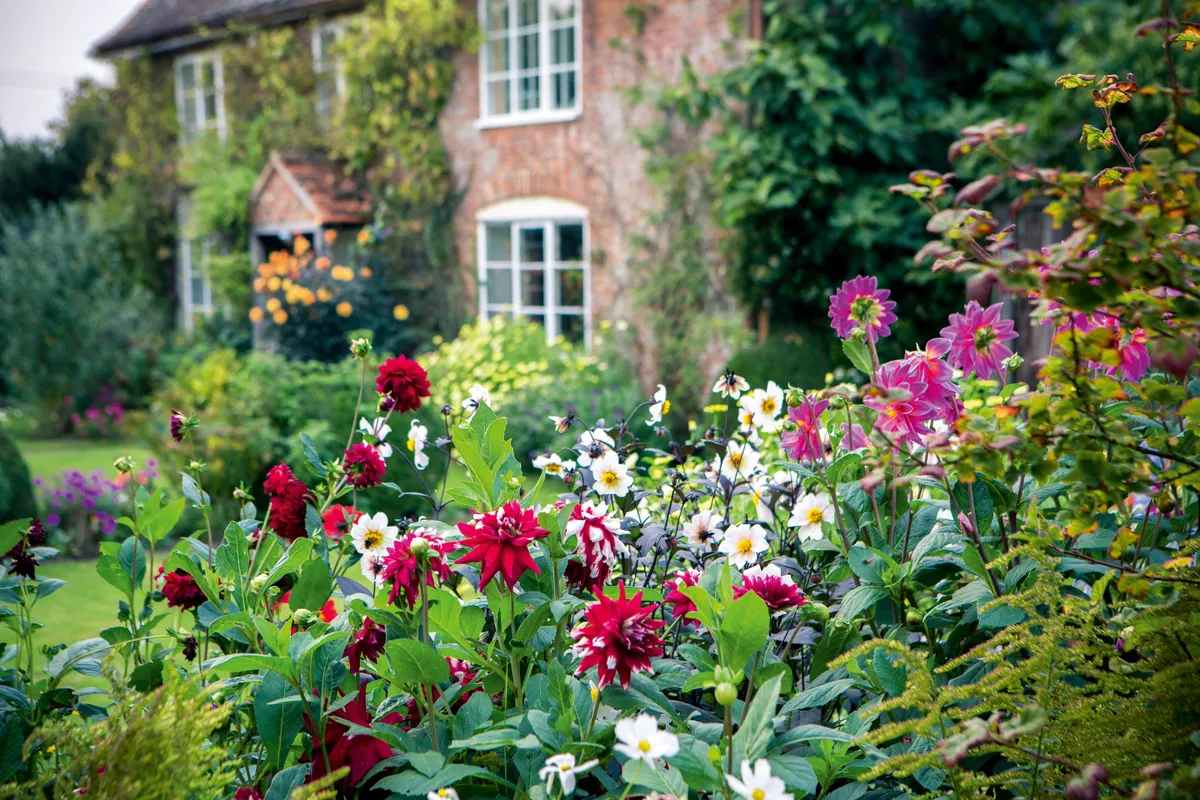
Anything he needs, Deryck makes himself using bits he has. He believes that progress generally has landed us in a pretty poor predicament but happily lives to work – unlike so many of us who work to live. He gets up with the birds – “How can you not?” he asks – and spends his days outside or, when the weather is bad, in his workshop. One of the last of a generation, Deryck Body leads a life that hasn’t changed, in an industry he barely recognises, but he has the satisfaction of having passed his time more profoundly productively than most, in one of the loveliest of gardens.

Deryck’s mostly productive vegetable plot, where he grows sprouts, kale, beans and onions for the kitchen table, also has room for colour provided by yet more dahlias
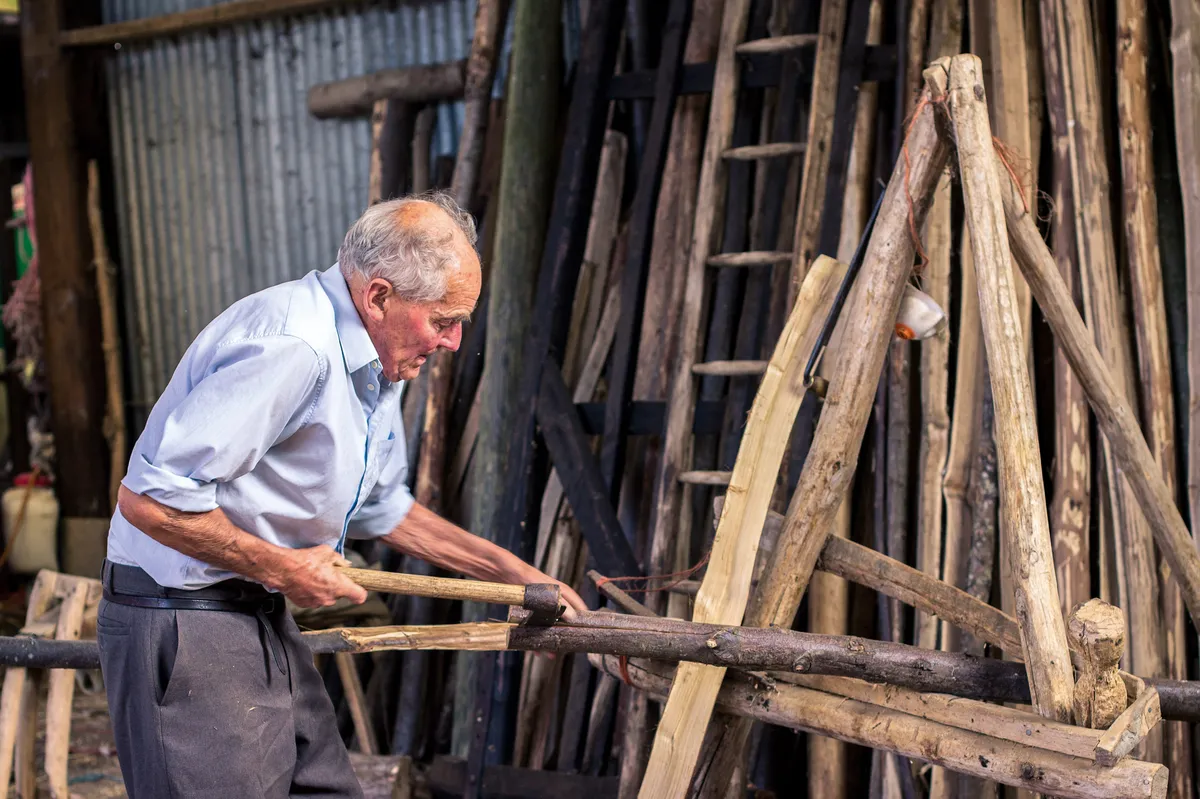
Deryck still spends much of his day in his workshop, making what he needs with green woodworking techniques that have been used for centuries.
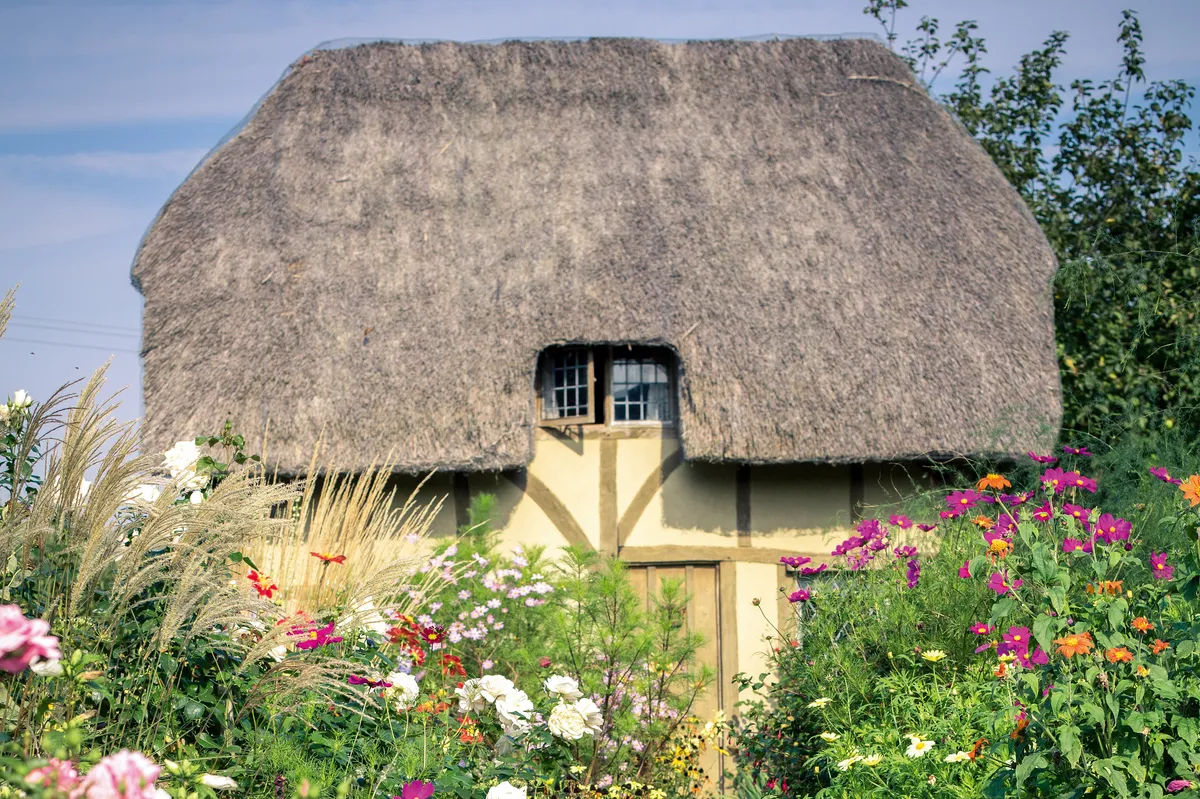
This tiny, half-timbered, thatched cottage, built by Deryck for his grandchildren, has an air of fairy-tale magic thanks in no small part to its scaled-down colourful cottage garden.
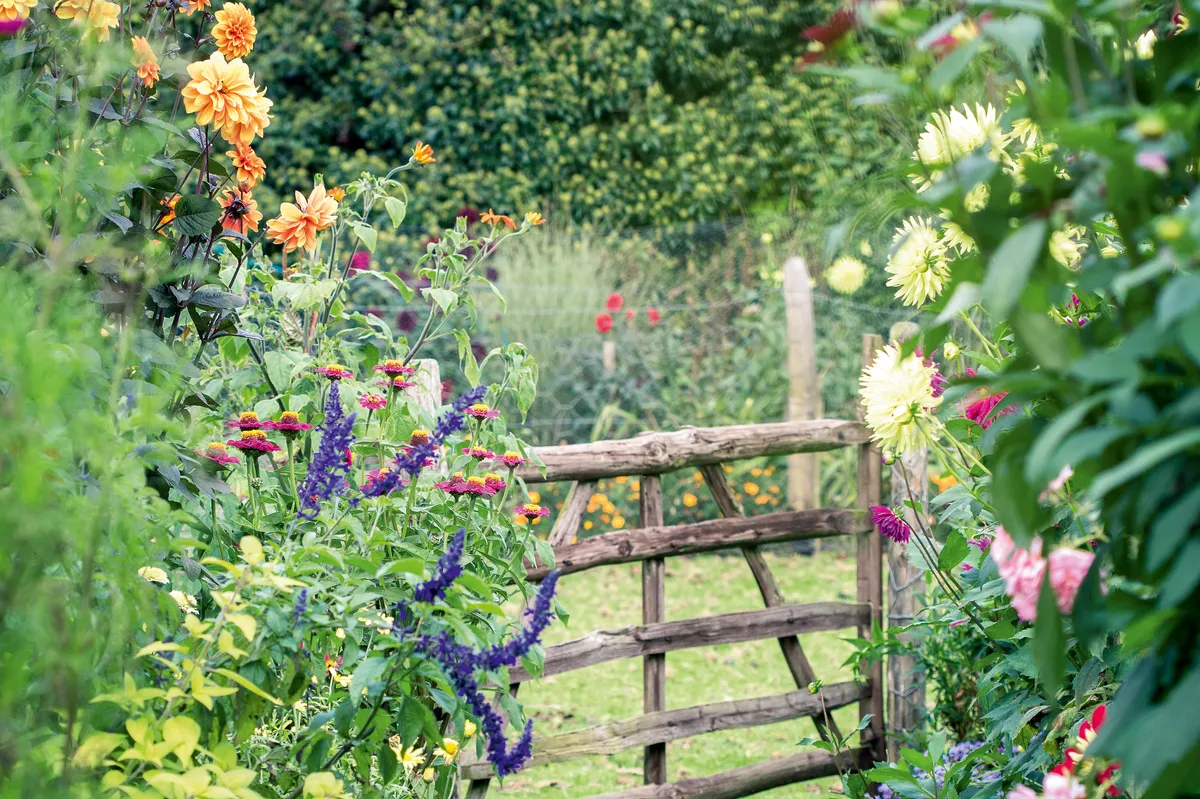
One of Deryck’s chestnut gates creates a dividing line between his vegetable plot and a flower garden filled with various dahlias, including the burnt-orange ‘David Howard’ and pale-yellow ‘Inca Spectrum’.
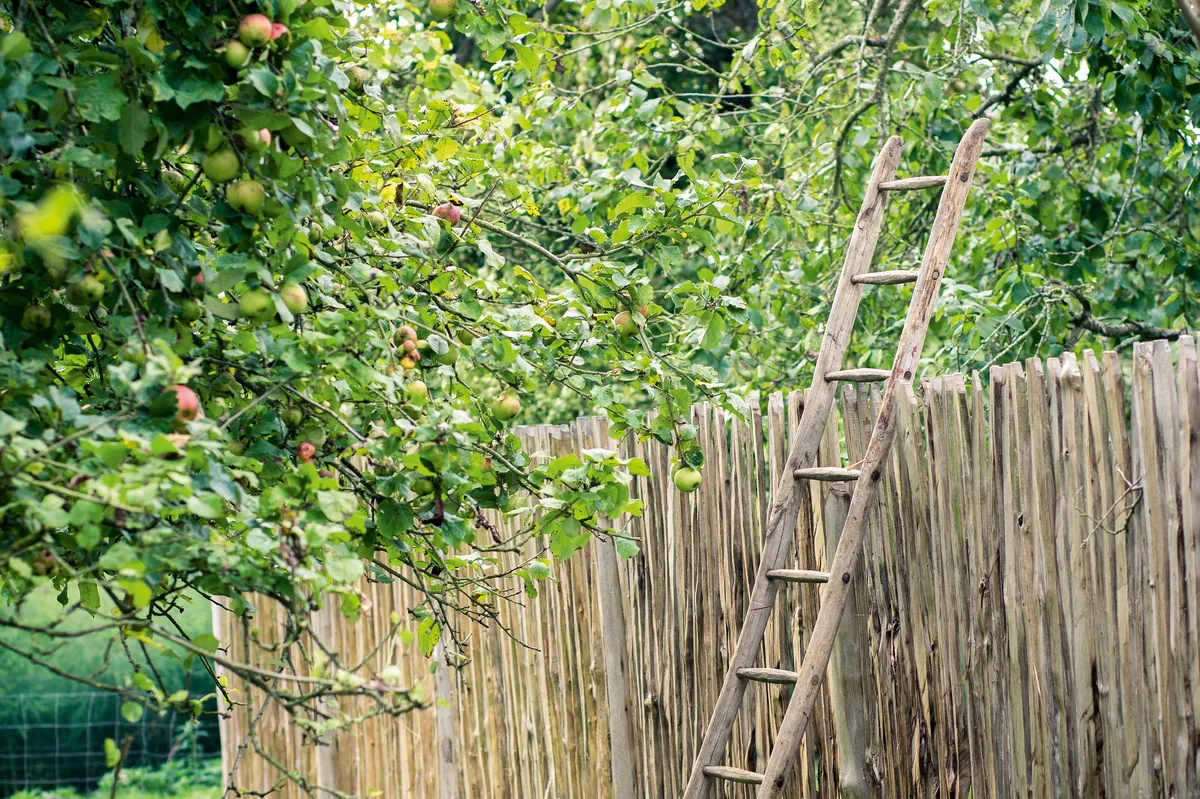
Both the traditional ladder and the chestnut fencing it leans against were made by Deryck. The fence surrounds of a highly productive cider apple orchard.
Deryck’s lore
• Deryck keep beds weed free with a sharp swan-necked hoe, so he doesn’t have to weed on hands and knees.
• He deadheads daily to encourage flowering.
• He keeps his hedges (and topiary) in shape with a sickle or brush hook that’s “as sharp as anything”, trimming little and often so new growth never gets woody.
• He spins his sheep’s wool on a homemade wheel. I was shown bags of the softest wool, some dyed with young forsythia leaves for a yellow hue.
• Clothes are line-dried in the garden and hung with pegs handmade of split grey willow cut below a node. The wood is as smooth as silk and won’t snag clothes.
• Deryck makes everything himself. When he and Betty moved into the farmhouse, they couldn’t find their nutcracker. Deryck made one from a gutter bracket, which he still uses.
• Dahlias are left in the soil with their stalks as markers and mulched deep to protect their tubers from frost – in colder areas they should be lifted and stored.
• Sheep keep grass down in this garden. Geese, says Deryck, are also good for this, but they are messier, noisier, and often more aggressive.
• Deryck makes full use of local fruits and nuts; the farm still makes cider from the orchard apples and Deryck used to make cherry wine from tiny bird cherries in local orchards.